#muséum national d'histoire naturelle
Explore tagged Tumblr posts
Text

#frank from hellraiser#l'écorché#Muséum national d'Histoire naturelle#paris#dark academia#grey academia#museum#museum photography#museum aesthetic#ἐποίησα
9 notes
·
View notes
Text


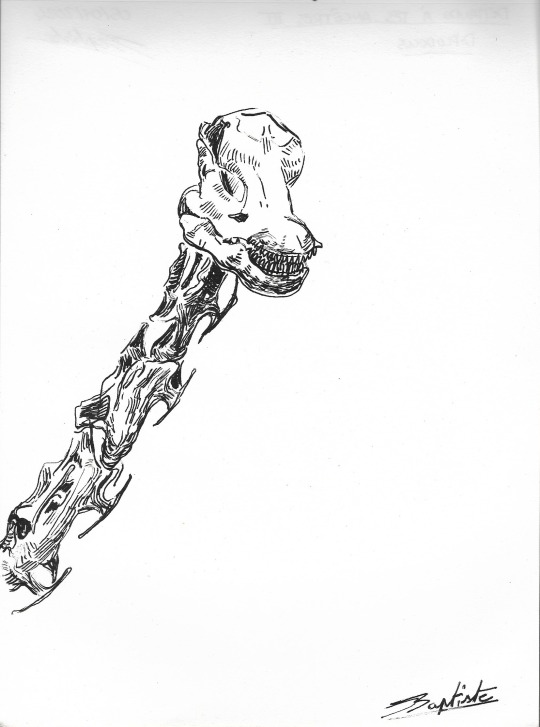
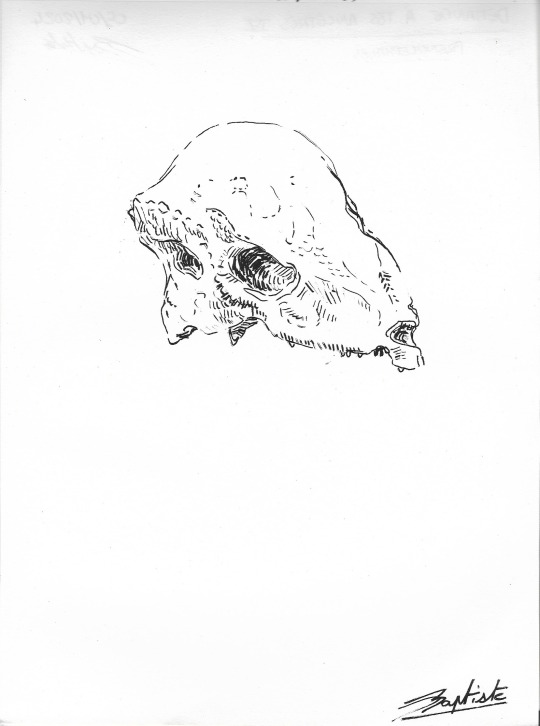



Demande à tes ancêtres I (Triceratops), 2024, Posca sur papier, 21 x 29,7 cm
Demande à tes ancêtres II (Scutosaurus), 2024, Posca sur papier, 29,7 x 21 cm
Demande à tes ancêtres III (Diplodocus), 2024, Posca sur papier, 29,7 x 21 cm
Demande à tes ancêtres IV (Prenocephales), 2024, Posca sur papier, 29,7 x 21 cm
Demande à tes ancêtres V (Bambiraptor), 2024, Posca sur papier, 21 x 29,7 cm
Demande à tes ancêtres VI (Carnotaurus), 2024, Posca sur papier, 29,7 x 21 cm
Demande à tes ancêtres VII (Iguanodon), 2024, Posca sur papier, 29,7 x 21 cm
#art#dessin#drawing#dessin d'observation#observation drawing#Posca#marker#fossile#fossil#dinosaure#dinosaur#Muséum national d'histoire naturelle#paléontologie#paleontology#et ils répondent tous la même chose
12 notes
·
View notes
Photo

A new variant has been added!
Orange-sided Thrush (Geokichla peronii) © Muséum national d'histoire naturelle (France)
It hatches from black, bold, broad, characteristic, eastern, extensive, high, musical, orange, pale, rich, rusty, striped, thin, unmistakable, white, and wooded eggs.
squawkoverflow - the ultimate bird collecting game 🥚 hatch ❤️ collect 🤝 connect
#squawkoverflow#orange-sided thrush#geokichla peronii#birds#muséum national d'histoire naturelle (france)
1 note
·
View note
Text
A new species of Antarctic dragonfish, Akarotaxis gouldae or Banded Dragonfish, has been discovered in waters off the western Antarctic Peninsula by researchers at William & Mary's Virginia Institute of Marine Science (VIMS). The species, named in honor of the recently decommissioned Antarctic research and supply vessel (ARSV) Laurence M. Gould and its crew, exemplifies both the unknown biodiversity and fragile state of the Antarctic ecosystem. Described in the journal Zootaxa, Akarotaxis gouldae was initially identified through genetic analysis. Larval specimens collected off the coast of Antarctica while trawling for zooplankton were originally thought to be Akarotaxis nudiceps, a closely related dragonfish. However, after comparing their DNA to Akarotaxis nudiceps specimens housed in collections at VIMS, Yale University and the Muséum national d'Histoire naturelle in Paris, France, significant variations in mitochondrial gene regions suggested the larval samples were a species unto themselves.
Continue Reading.
64 notes
·
View notes
Text
Uncharismatic Fact of the Day
There’s lots to love about the saltwater crocodile, since they’re the largest living reptile in the world! Males can grow 6m (20ft) long and weigh up to 1,500 kg (3,3000 lbs). The largest specimin was likely over 7 m (23 ft) range, based on the skull currently housed in the Muséum national d'Histoire naturelle in France.

(Image: A saltwater crocodile () out for a swim by David Hancock)
If you like what I do, consider leaving a tip or buying me a ko-fi!
#Saltwater crocodile#crocodilia#Crocodylidae#true crocodiles#crocodilians#reptiles#uncharismatic facts
193 notes
·
View notes
Text
For #NationalPandaDay:

Earliest published European image of the Giant Panda (Ailuropoda melanoleuca), based on the first skin sent to Europe, acquired by French missionary Armand David in China in 1869 and sent to Muséum national d'Histoire naturelle in Paris.
Plate 50 in H. Milne-Edwards’ Recherches pour servir à l'histoire naturelle des mammifères (Paris, 1868-1874). BHL.
#animals in art#animal holiday#european art#19th century art#species ID#panda#giant panda#natural history art#scientific illustration#zoology#mammalogy#book plate#lithograph#BHL#Biodiversity Heritage Library#National Panda Day
30 notes
·
View notes
Photo

PATRIMOINE | Dinosaure : nouvelle espèce découverte en Charente ➽ https://bit.ly/Dinosaure-Charente L'été dernier, de nouvelles découvertes d'os de dinosaures, vieux de 140 millions d'années, ont été faites sur le chantier de fouilles d'Angeac-Charente. Ces fossiles seront acheminés prochainement au Muséum National d'Histoire Naturelle
3 notes
·
View notes
Text
Muséum National d'Histoire Naturelle










2 notes
·
View notes
Text


Muséum national d'histoire naturelle of Paris, France.
5 notes
·
View notes
Text


Plaque en hommage à : Edmond Becquerel
Type : Lieu de travail
Adresse : Jardin des Plantes, 57 rue Cuvier, 75005 Paris, France
Date de pose : Inconnue
Texte : Ici en 1839, Edmond Becquerel a découvert l'effet photovoltaïque
Quelques précisions : Edmond Becquerel (1820-1891) est un physicien français. Il est connu pour avoir découvert l'effet photovoltaïque en 1839 et pour avoir créé la première photographie couleur en 1848. Il fut professeur au Muséum national d'histoire naturelle et Président de l'Académie des sciences. Son fils Henri fut également physicien (une plaque, proche de celle présentée ici, commémore sa découverte de la radioactivité).
#individuel#hommes#travail#scientifiques#physicien#france#ile de france#paris#edmond becquerel#non datee
2 notes
·
View notes
Text


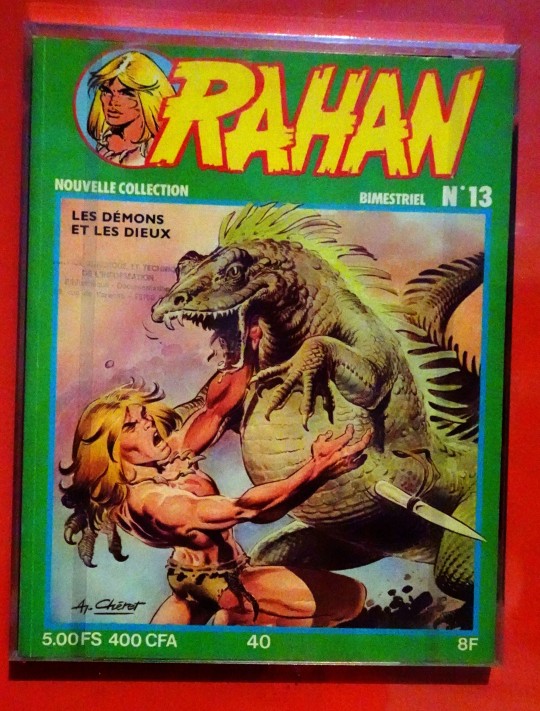
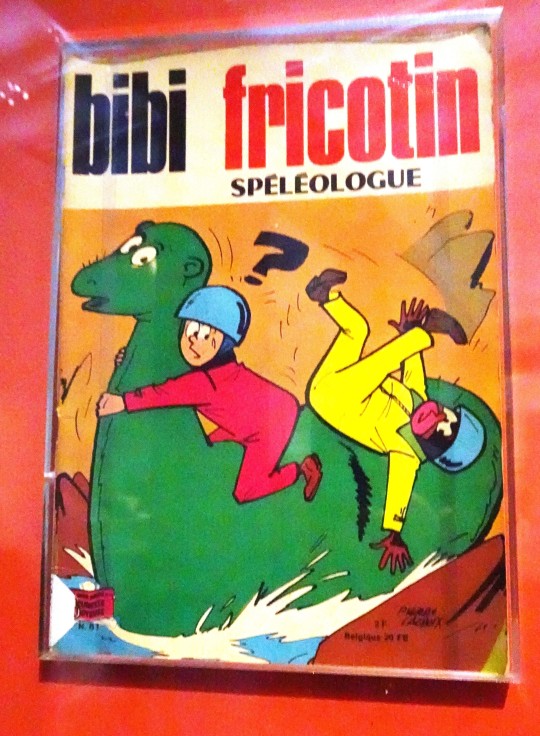


Il y a une petite quinzaine, je suis allé avec Julien et Katie, au Louvre-Lens pour une expo temporaire : "Animaux Fantastiques". Une très belle expo ! Ici des dragons et leurs cousins, les dinosaures !
John Martin, illustrateur pour le livre de Thomas Hawkins - "Le Livre des grands dragons de la mer, ichtyosaures et plésiosaures" -Londres,1840
Benjamin Waterhouse Hawkins - Iguanodon - Londres,1855 (on est bien loin de la représentation actuelle de ce dinosaure !!) - et...voir le dernier.
les 3 suivants : Rahan, Bibi Fricotin et autres magazines des années 70
Eric Pellé - "Multispecies incroyabilis" (E. Pellé est un préparateur en ostéologie du Muséum national d'Histoire Naturelle)
#expo#louvre-lens#animaux fantastiques#monstre#créature#dinosaure#john martin#thomas hawkins#angleterre#victorienne#iguanodon#ichtyosaure#plésiosaure#benjamin waterhouse hawkins#rahan#bibi fricotin#fantasy#eric pellé#chimère#hybride#multispecies mirabilis#ostéologie#muséum national d'histoire naturelle
4 notes
·
View notes
Photo
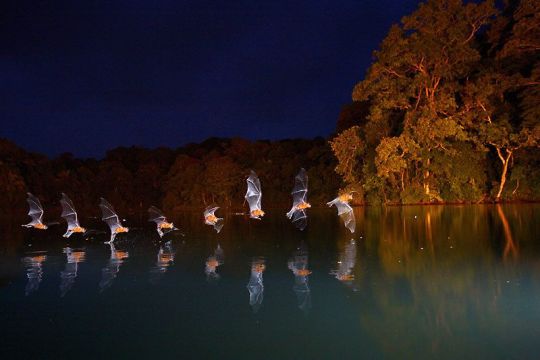
"Grand Noctilion" par Christian Ziegler (2016) à l'exposition "Les Plus Belles Photographies de la Vie Sauvage" proposée par le National Geographic au Muséum d'Histoire Naturelle de Marseille dans le Palais Longchamp, avril 2023.
#expos#Ziegler#NationalGeographic#MuseumHistoireNaturelleMarseille#PalaisLongchamp#chauve-souris#Marseille
3 notes
·
View notes
Text
Researchers reporting in the journal Current Biology on December 4 have found the earliest-known fossil mosquito in Lower Cretaceous amber from Lebanon. What's more, the well-preserved insects are two males of the same species with piercing mouthparts, suggesting they likely sucked blood. That's noteworthy because, among modern-day mosquitoes, only females are hematophagous, meaning that they use piercing mouthparts to feed on the blood of people and other animals. "Lebanese amber is, to date, the oldest amber with intensive biological inclusions, and it is a very important material as its formation is contemporaneous with the appearance and beginning of radiation of flowering plants, with all what follows of co-evolution between pollinators and flowering plants," says Dany Azar of the Nanjing Institute of Geology and Paleontology at the Chinese Academy of Sciences and the Lebanese University. "Molecular dating suggested that the family Culicidae arose during the Jurassic, but previously the oldest record was mid-Cretaceous," says André Nel of the National Museum of Natural History of Paris (Muséum National d'Histoire Naturelle de Paris). "Here we have one from the early Cretaceous, about 30 million years before." The Culicidae family of arthropods includes more than 3,000 species of mosquitoes. The new findings suggest that male mosquitoes in the past fed on blood as well, according to the researchers. They also help to narrow the "ghost-lineage gap" for mosquitoes, they say.
Continue Reading.
187 notes
·
View notes
Text
L’importance des observations participatives pour la recherche
See on Scoop.it - EntomoNews
Depuis les années 1970-1980, les populations d’insectes subissent un important déclin. Sur les 253 espèces de papillons de jour connues et présentes en métropole, 16 sont menacées de disparition et 18 sont quasi-menacées. En cause, l’usage de produits phytosanitaires et l’urbanisation. Les papillons jouent pourtant un rôle important dans la biodiversité et les fonctionnements écosystémiques, notamment en raison de leur place dans la chaîne alimentaire, mais également parce qu’ils pollinisent environ 90% des plantes à fleurs et 84% des plantes cultivées. Pour contrer ce déclin, il est autant nécessaire de remettre en question les pratiques humaines sur l’environnement, que de comprendre le rôle des papillons dans les écosystèmes et d’identifier les dangers dont ils sont la cible afin de parvenir à une meilleure protection.
Sciences participatives au jardin, 10.03.2025
"En France métropolitaine, les papillons sont soumis à l’augmentation des surfaces urbaines et agricoles, qui entraine une artificialisation des sols ainsi qu’une réduction et une fragmentation de leurs habitats. Dans les zones urbanisées, les jardins apparaissent alors comme des refuges pour la biodiversité, dont les papillons sont les premiers bénéficiaires : la végétation qui y est présente leur offre de la nourriture ainsi que des lieux favorables à la reproduction et la ponte. Les observations citoyennes dans les jardins privés permettent donc de récolter des données dans des espaces peu connus et peu accessibles aux scientifiques, contribuant ainsi concrètement au suivi des espèces. Les observations participatives tiennent donc une place non négligeable dans le paysage scientifique, même si certaines voix s’élèvent pour remettre en question la validité d’observations provenant d’un public composé de non-spécialistes."
------
NDÉ
Complément1
Observatoire de la Biodiversité des Jardins - Opération Papillons, observatoire en biodiversité – portail OPEN https://www.open-sciences-participatives.org/fiche-observatoire/129
Description du programme
Le programme « Opération Papillons » est l'un des premiers projets de sciences participatives sur le thème de la Biodiversité proposé au public en France. Lancé en 2006 par Noé et le Muséum national d’Histoire naturelle, il a pour objectifs d'améliorer les connaissances scientifiques sur les papillons et leurs milieux de vie et de reconnecter l'Homme à la nature en incitant aux changements de pratiques. Les données récoltées sur du long terme via l’Opération Papillons ont pour objectif de mesurer les effets des activités humaines (agriculture, urbanisation, réchauffement climatique, etc.) sur ces espèces. Le protocole lié aux papillons se déroule chaque année de mars à octobre depuis le lancement du programme. Depuis 2006, on compte plus de 12 000 jardins participants et plus de 1 500 000 papillons comptés !
Objectifs du programme
Collecte de données dans le cadre d’une recherche scientifique s’appuyant sur un protocole scientifique établi
Collecte de données dans le cadre d’un programme de sensibilisation pour mieux connaître les espèces et leurs habitats et les préserver
RÉFÉRENT SCIENTIFIQUE :
Muséum national d'histoire naturelle
THÈMES :
En montagne
En ville
Parcs & jardins
En campagne
ESPÈCES :
Papillons, pollinisateurs et autres insectes
------
Complément2
Lorsque la question scientifique et le protocole de collecte sont élaborés de manière réfléchie et adaptée à la participation efficace des citoyens, les sciences et recherches participatives constituent une ressource précieuse tant au niveau scientifique que sociétal.
La qualité des données issues des sciences citoyennes, un faux problème ? portail OPEN - 02/2022 https://www.vigienature.fr/sites/vigienature/files/atoms/files/castagneyrol_2021_sciences_participatives_.pdf
Figure 1. Le cycle de vie des données de crowdsourcing acquises dans le cadre des sciences et recherches participatives. Toutes les étapes présentées dans cette infographie ne se retrouvent pas dans tous les programmes de sciences et recherches participatives basées sur le crowdsourcing (vérification, protocole, entraînement, supports pédagogiques peuvent manquer).
via Noé, Vigie-Nature, « Fiche vulgarisatrice : quelle est la qualité des données issues de sciences participatives ? », 2024
0 notes
Text
Pourquoi l’engrais est-il à la fois un poison et bon pour les plantes ?
Ephraïm s'interroge sur l'utilisation de l'engrais bénéfique à la croissance des plantes et néfaste pour la planète en cas d'utilisation intensive. Marc-André Selosse, Professeur au Muséum national d'histoire naturelle et spécialiste des sols lui répond.
0 notes
Text

90
Février 2025- Dessin Observation au Muséum National d'Histoire Naturelle
0 notes